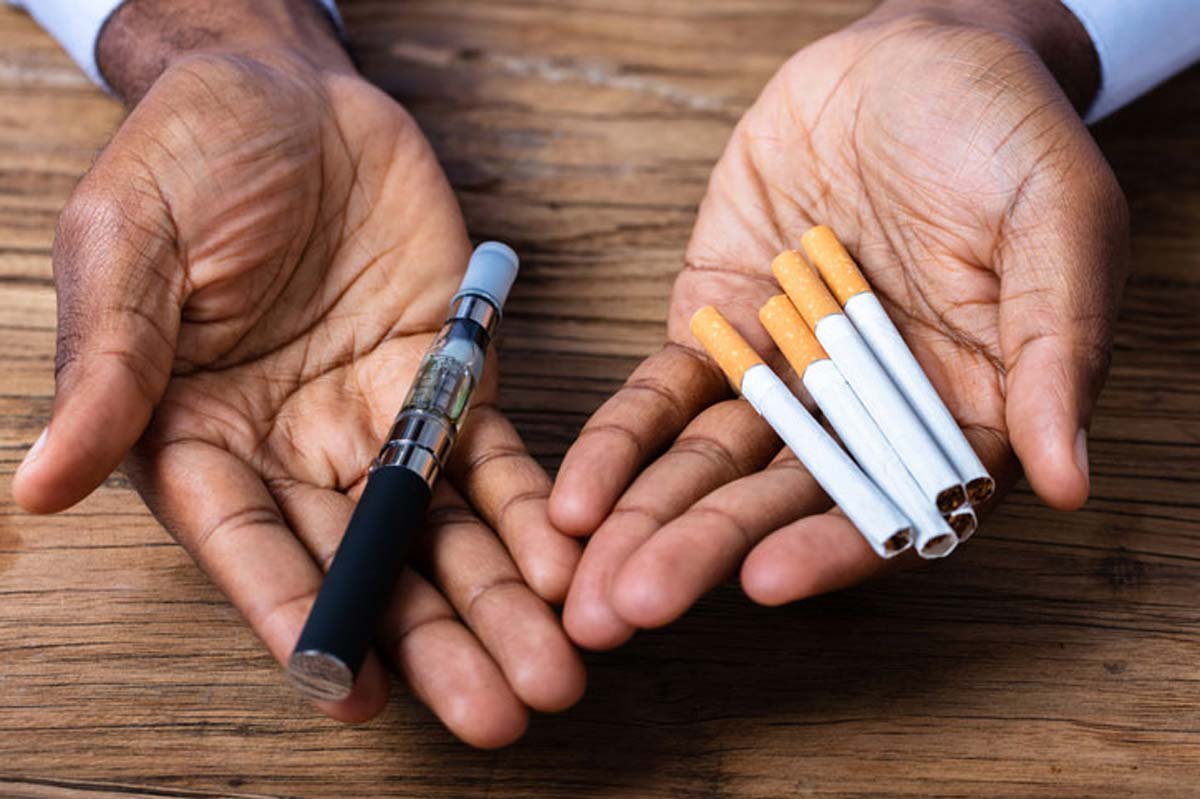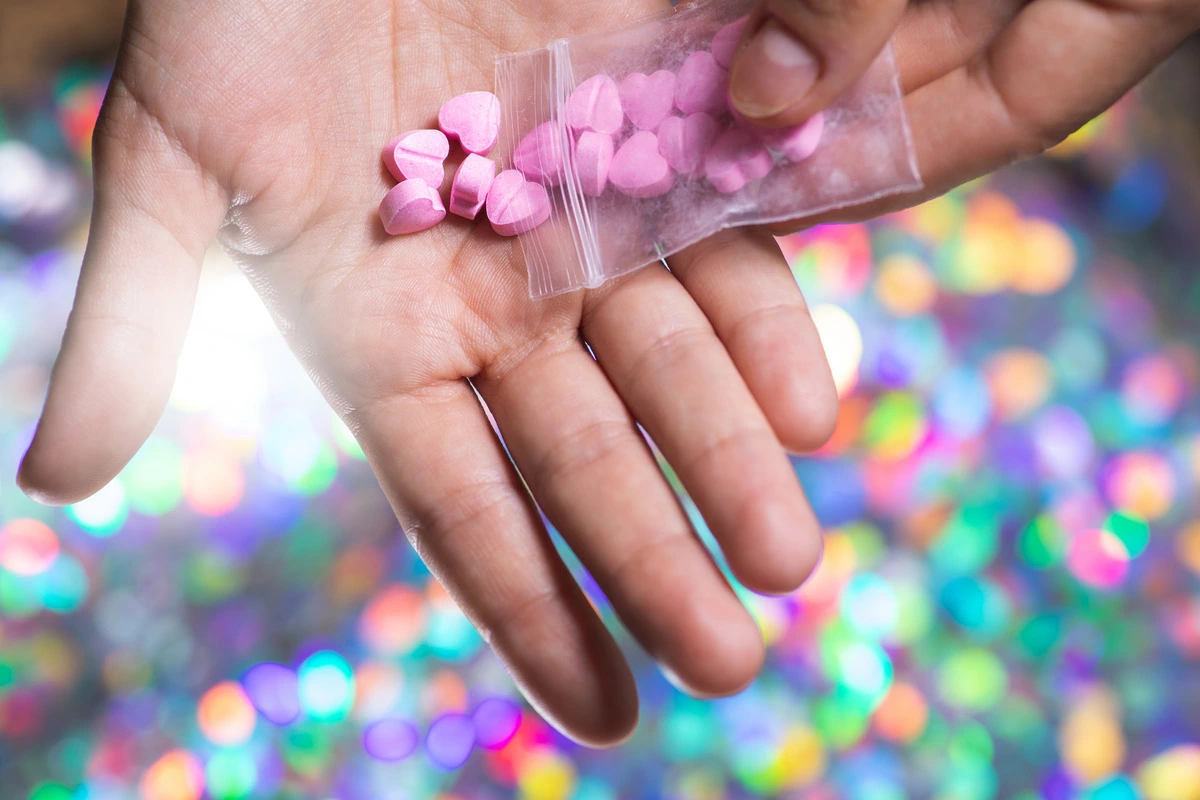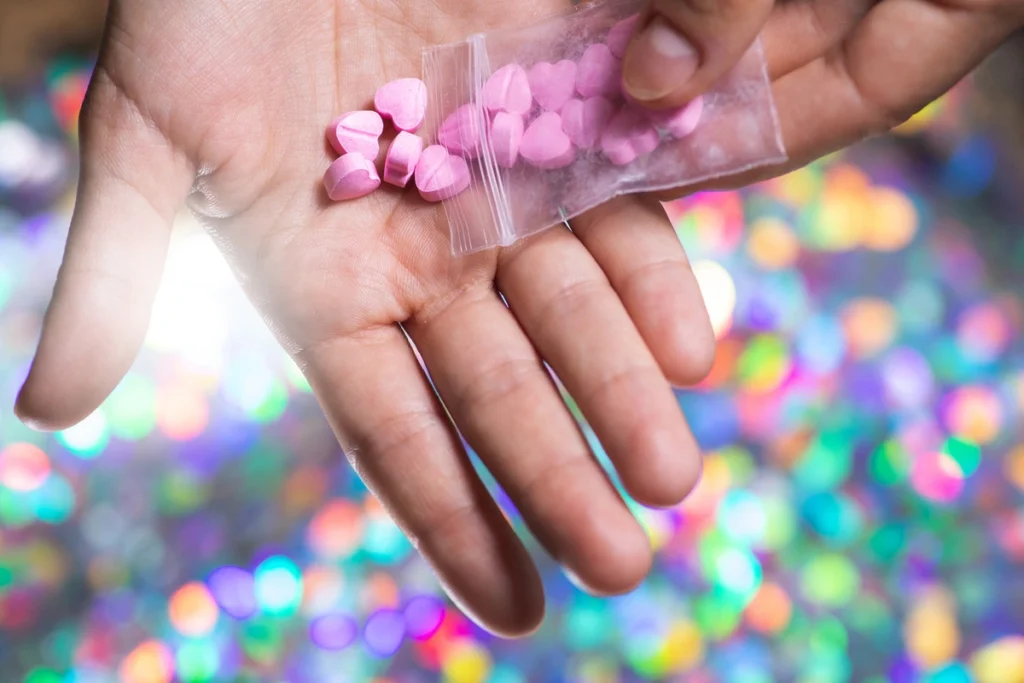
Are you or a loved one considering methadone as part of a recovery journey? You’re not alone. Many women facing the challenges of addiction seek effective treatments that offer hope and a path forward. Methadone, a long-acting opioid medication, has been a cornerstone in addiction treatment, especially for heroin and opioid dependency. It reduces cravings and withdrawal symptoms, paving the way for recovery and rehabilitation. At Anchored Tides Recovery, we understand the intricacies of addiction and the importance of informed decisions.
Imagine a life free from the grips of addiction, where every day is a step towards reclaiming your strength and independence. Methadone treatment, when combined with our comprehensive therapy and support programs, offers such a promise. Let’s explore some key aspects to empower you with knowledge and confidence.
History of Methadone in the Medical Field
The history of Methadone traces back to the early 20th century, marking a series of developments that underscore its significance in both pain management and addiction treatment. This synthetic opioid was first developed in Germany in 1937 by scientists Max Bockmühl and Gustav Ehrhart, who were searching for a pain-relief medication that would be easier to produce and had less potential for addiction than morphine or heroin. Initially introduced under the brand name Dolophine, Methadone was used for pain relief during World War II due to shortages of other opiates.
After the war, the use of Methadone expanded beyond pain management. By the late 1940s and early 1950s, researchers in the United States began exploring its potential to treat opioid addiction. The pioneering work of Drs. Vincent Dole and Marie Nyswander at the Rockefeller Institute in New York City in the 1960s significantly shaped the future of Methadone as a medication-assisted treatment (MAT). They discovered that Methadone could be used not only to alleviate withdrawal symptoms but also to maintain long-term stability for individuals with heroin addiction, thereby reducing cravings and the likelihood of relapse.
This discovery marked a turning point, leading to the establishment of Methadone maintenance therapy as an accepted practice for treating opioid dependency. The U.S. government officially recognized the value of Methadone treatment and began regulating its distribution through specialized clinics, a practice that continues today. These regulations ensure that Methadone is administered safely and effectively, under the supervision of healthcare professionals.
Over the years, Methadone has been subjected to various studies and policy changes, reflecting ongoing efforts to balance its benefits in treating addiction with concerns about misuse and diversion. Despite challenges, it remains a cornerstone of opioid addiction treatment, with evidence supporting its efficacy in reducing drug-related harm and facilitating recovery.
What is Methadone?
Methadone is a medication-assisted treatment (MAT) option vital for the recovery process from opioid addiction, providing a cornerstone for those on the path to sobriety. It uniquely contributes to the journey by altering the brain’s response to pain and effectively reducing withdrawal symptoms, setting it apart as a critical tool in managing addiction.
By acting on the same opioid receptors in the brain affected by heroin and prescription opioid medications, Methadone mitigates the euphoric effects associated with these drugs without producing the high. This action reduces the patient’s need for the abused substance and is a key factor in preventing relapse. Its ability to lessen the severity of withdrawal symptoms makes the recovery process significantly more manageable and less distressing for individuals.
Another advantage of Methadone is its long-acting nature, requiring only once-daily dosing. This feature not only aids in compliance but also supports a more stable recovery process, allowing individuals to maintain their daily routines, including work and family commitments, with fewer interruptions.
While Methadone effectively addresses the physical aspects of opioid addiction, it is most beneficial when part of an integrated treatment plan. Comprehensive recovery encompasses not just the physiological, but also the psychological facets of addiction. Therefore, counseling and behavioral therapies are essential components of a successful treatment strategy, aiming to treat the whole person.
What Are The Recommended Doses of Methadone?
Determining the appropriate dose of Methadone for an individual is a critical step in the medication-assisted treatment (MAT) process. This task requires careful consideration by healthcare professionals, who take into account a variety of factors to ensure the safety and effectiveness of the treatment. The goal is to find the minimal effective dose that successfully manages withdrawal symptoms and cravings without causing sedation or other adverse effects.
- Initial Dosing: The starting dose of Methadone for opioid addiction treatment is typically conservative, often ranging from 15 to 30 milligrams per day. This cautious approach helps to assess the patient’s response to the medication and minimize the risk of respiratory depression, a potential side effect of opioid medications.
- Dose Adjustment: Following the initial dose, adjustments are made based on the patient’s response, including the alleviation of withdrawal symptoms and cravings. It is not uncommon for the dose to be gradually increased during the first week of treatment to find the optimal maintenance dose. This process requires regular monitoring and close communication between the patient and their healthcare provider.
- Maintenance Dosing: The maintenance dose varies significantly among individuals, with some requiring up to 80-120 milligrams per day or more. The correct dose is one that prevents withdrawal symptoms for a full 24 hours without causing intoxication or significant side effects.
- Duration of Treatment: The duration of Methadone treatment is highly individualized. Some individuals may undergo treatment for several months, while others might need maintenance therapy for years or even indefinitely. Decisions regarding the length of treatment and dose adjustments are made collaboratively between the patient and their healthcare provider, considering factors such as the patient’s overall health, progress in treatment, and personal recovery goals.
It is important to note that Methadone must always be taken under the supervision of a healthcare professional experienced in treating opioid addiction. Regular follow-ups and adjustments are integral to the treatment’s success, ensuring that the dose remains effective and safe over time.
Benefits of Methadone Treatment
Methadone treatment offers a comprehensive approach to overcoming opioid addiction, with numerous benefits that facilitate a smoother recovery process. Here’s how methadone makes a difference:
- Reduces cravings for opioids: Methadone’s effectiveness in reducing the intense cravings associated with opioid withdrawal is a key factor in preventing relapse. By acting on the same brain receptors as other opioids, it helps to ease the psychological urge to use, allowing patients to focus more fully on their recovery journey.
- Decreases withdrawal symptoms: One of the biggest challenges in overcoming opioid addiction is managing withdrawal symptoms, which can be severe and even debilitating. Methadone alleviates these symptoms, making the detoxification process more bearable and lessening the risk of complications.
- Improves the likelihood of successful recovery: By stabilizing the patient’s condition and providing a controlled, less euphoric effect than other opioids, methadone enables individuals to maintain daily activities, including work and family responsibilities, without the constant battle against cravings and withdrawal.
Does Methadone Work?
Methadone has been scientifically proven to be effective in treating opioid addiction. It helps individuals achieve and maintain sobriety by managing withdrawal symptoms and cravings, which are significant barriers to recovery. Reduces the risk of relapse by maintaining stable levels of opioids in the brain, thus preventing the physical discomfort associated with withdrawal.
Studies have shown that methadone treatment improves social functioning and quality of life for those in recovery. It allows individuals to rebuild their lives, maintain employment, and improve family and social relationships.
Long-Term Success
Success rates vary among individuals, but methadone treatment, especially when combined with counseling and support services, significantly increases the chances of long-term recovery.
It’s important to view methadone treatment as part of a holistic approach to addiction recovery, which includes psychological support, lifestyle changes, and ongoing care.
How Can I Be Prescribed to Methadone?
Methadone can only be prescribed by a healthcare professional who is certified to treat opioid addiction with this medication. Treatment usually starts in a specialized clinic or treatment center that offers Medication-Assisted Treatment (MAT).
The Initial Assessment
The first step involves a thorough medical assessment, including a review of your medical history, substance use history, and current health status. This assessment helps determine if methadone is a suitable option for you. Drug screening tests may also be conducted to ensure the safety and appropriateness of methadone treatment.
Collaborative Decision-Making
If methadone is considered appropriate for your situation, the healthcare provider will discuss the treatment plan with you, including the dosage, administration schedule, and any necessary lifestyle adjustments.
Consent and commitment
You’ll be informed about the benefits and potential side effects of methadone. It’s crucial to commit to the treatment plan and follow the healthcare provider’s instructions closely.
Mixing Methadone with Other Prescriptions
Combining methadone with other medications can lead to drug interactions that may affect the efficacy of your treatment or pose significant health risks. Some interactions can increase side effects, while others may reduce the effectiveness of methadone or the co-administered drug.
Key Considerations
- Inform your healthcare provider about all medications, supplements, and over-the-counter drugs you are currently taking. Transparency is crucial for safe and effective treatment.
- Always consult your healthcare provider before starting any new medication or supplement. This includes seemingly harmless over-the-counter remedies.
Common Interactions
Central Nervous System (CNS) depressants: Medications that also depress the CNS, such as benzodiazepines, alcohol, and certain sleep aids, can enhance methadone’s sedative effects, increasing the risk of respiratory depression, sedation, and even fatal overdose.
Antiretroviral drugs: Some medications used to treat HIV/AIDS can affect methadone levels, either increasing the risk of withdrawal symptoms or leading to toxicity.
Antibiotics, antifungal medications, and anticonvulsants: Certain drugs in these categories may also interact with methadone, requiring adjustments in dosage or careful monitoring.
Is It Possible to Overdose with Methadone?
Methadone, like other opioids, has the potential for overdose if it is not taken as prescribed. The risk increases if methadone is taken in higher doses than recommended, combined with other substances, especially other opioids, alcohol, or benzodiazepines, or if it’s used by someone for whom it was not prescribed.
Recognizing the Signs of Methadone Overdose
Symptoms of a methadone overdose can include severe respiratory depression, clammy skin, limp muscles, constricted pupils, and unconsciousness. An overdose of methadone can be fatal, especially in individuals not accustomed to taking opioids.
Can I Be Addicted to Methadone?
Methadone is an opioid medication used in the treatment of opioid addiction and pain management. Like other opioids, it has the potential to be habit-forming, leading to dependence or addiction if not used as prescribed.
Dependence vs. Addiction: It’s crucial to distinguish between physical dependence and addiction. Dependence refers to the body’s physical adaptation to the drug, resulting in withdrawal symptoms if the drug is abruptly discontinued. Addiction, however, is characterized by compulsive drug seeking and use, regardless of harmful consequences.
The Signs of Methadone Addiction
Understanding the signs of methadone addiction is crucial for individuals undergoing treatment and their loved ones. Early recognition of these signs can lead to timely interventions, enhancing the chances of successful recovery.
Behavioral Signs:
- Increased preoccupation with obtaining and taking methadone outside of prescribed guidelines.
- Doctor shopping or visiting multiple healthcare providers to obtain additional methadone prescriptions.
- Isolation from friends and family, or spending time with a new group of people who misuse substances.
- Neglecting responsibilities at home, work, or school as a result of methadone use.
Physical Signs:
- Changes in sleep patterns, such as sleeping more or less than usual.
- Weight loss or gain without a clear reason.
- Appearing sedated or unusually lethargic, especially if this is a departure from their normal behavior.
Psychological Signs:
- Increased secrecy or lying about methadone use or the amount consumed.
- Mood swings or sudden changes in behavior, including signs of depression or anxiety.
- Loss of interest in hobbies or activities that were once enjoyable.
Health-Related Signs:
- Experiencing withdrawal symptoms when methadone is not taken, indicating physical dependence.
- Using methadone in combination with other substances, like alcohol or benzodiazepines, to achieve heightened effects.
Have More Questions? Contact Our Team!
Ready to take the first step towards a new beginning? Embark on your journey to recovery with Anchored Tides Recovery, where every step is a stride toward a brighter, healthier future. Our dedicated team of professionals is here to support you through every phase of your recovery process, offering personalized care in a compassionate and understanding environment. We accept most major insurances!



 Ativan, a brand name for lorazepam, belongs to the benzodiazepine class of drugs and is primarily prescribed to manage anxiety disorders, insomnia, and certain seizure disorders. While Ativan can be highly effective in treating these conditions when used as prescribed, its potential for abuse and addiction necessitates a deeper understanding of its pharmacokinetics, including how long it remains detectable in the body. If you or a loved one is struggling with Ativan addiction, don’t hesitate to reach out to
Ativan, a brand name for lorazepam, belongs to the benzodiazepine class of drugs and is primarily prescribed to manage anxiety disorders, insomnia, and certain seizure disorders. While Ativan can be highly effective in treating these conditions when used as prescribed, its potential for abuse and addiction necessitates a deeper understanding of its pharmacokinetics, including how long it remains detectable in the body. If you or a loved one is struggling with Ativan addiction, don’t hesitate to reach out to 


 Prescription drugs have undoubtedly revolutionized modern medicine, providing relief from pain, managing chronic conditions, and improving overall quality of life for countless individuals. However, alongside their therapeutic benefits, many prescription medications carry the potential for addiction and abuse. In this comprehensive guide, we will explore the most addictive prescription drugs, their mechanisms of action, the risk factors associated with their use, and the specialized addiction treatment options available at
Prescription drugs have undoubtedly revolutionized modern medicine, providing relief from pain, managing chronic conditions, and improving overall quality of life for countless individuals. However, alongside their therapeutic benefits, many prescription medications carry the potential for addiction and abuse. In this comprehensive guide, we will explore the most addictive prescription drugs, their mechanisms of action, the risk factors associated with their use, and the specialized addiction treatment options available at
















































